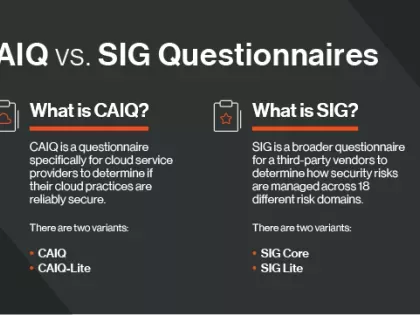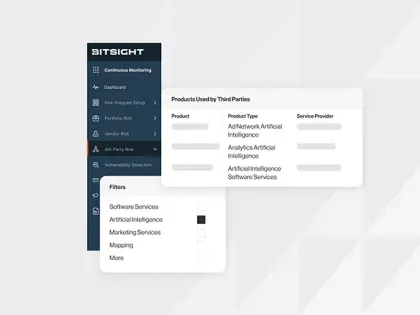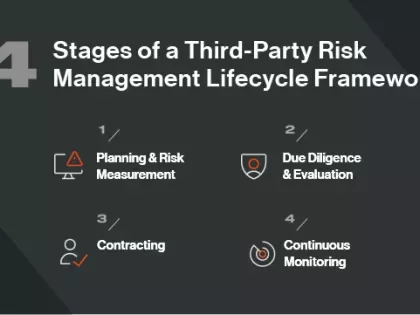7 Vendor Risk Assessment Tips
Tags:


Organizations rely on dozens or hundreds of third-party vendors every day to provide strategic services. Due to the increased reliance on outsourcing, the need to automatically and continuously monitor and manage vendors is not an option—it’s a business imperative.
As the frequency and severity of third-party data breaches continue to escalate, your organization must remain vigilant so it can effectively protect its network and data from cyberattacks. According to Verizon, the supply chain was responsible for 62% of System Intrusion incidents in 2022.
Safeguarding your organization from operational, reputational, and financial risk starts before vendors are onboarded, and it never stops. By continuously monitoring your relationships, you can ensure their ongoing eligibility protects the interests of both your organization and the customers you serve.
This is especially true in highly regulated industries such as healthcare, finance, or utilities, where analyzing vendor performance at every stage of the supply chain should not be left to chance. Anything can happen after you sign a contract with a business partner—from a global pandemic changing your security requirements, to a critical vendor being listed on federal or state sanction lists.
How do you make sure all vendors remain in good standing and that those with signed contracts meet your security standards? How to achieve full visibility into the security postures of all your third party relationships?
It all starts with building and prioritizing your vendor portfolio, which allows you to focus on the most critical relationships. New vendors go through due diligence and risk assessments, where you ask custom questions or request industry certifications and assurances to assess their security posture. After that, you monitor their security performance against different standards and constantly reassess that they meet your requirements.
Far from being a stressful or time consuming initiative, vendor risk management (VRM) can be easy and scalable given the right toolset. Automation plays a key role in monitoring, auditing, and reporting vendor risk in compliance with government regulations.
Here are seven tips for your next vendor risk assessment:
-
Establish vendor risk assessment policies and procedures to prevent staff from entering a relationship with a vendor that is listed on a federal or state exclusion list.
-
Perform continuous monitoring of existing third party vendors to ensure they don’t land on an exclusion list, such as OFAC or the Office of the Inspector General’s (OIG) List of Excluded Individuals/Entities (LEIE). Dedicated tools can help you conduct real-time screening of vendors after the initial contract is signed.
-
Build a risk management dashboard with key risk indicators (KRI) to get the full picture of your third party security and detect any gaps that need to be addressed.
-
Set alerts and threat level notifications to detect where you need to focus to ensure compliance; update your requirements when a zero day or other unexpected event occurs.
-
Conduct routine audits and reassessments to identify potential vulnerabilities before a breach occurs.
-
Act fast on risk mitigation to ensure you keep your good standing and avoid costly fines from governing bodies.
-
Validate your program with a complete audit trail of your risk management and compliance efforts.
Real-time vendor risk assessments are vital for your organization. Start today by putting together a vendor risk management program that includes good governance practices and proven technology.


